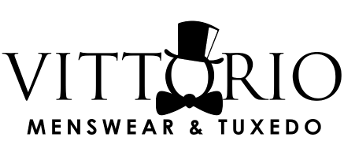
Naturally, we have a lot of customers stopping in to pick out something to wear for New Year’s Eve. Oddly enough, one topic that frequently comes up in conversation is champagne. New Year’s Eve is made for Champagne — and vice-versa. So, what are some things to look for?
There are increasing numbers of boutique Champagne and sparkling-wine producers making high-quality wines, and they’re showing up more often on local store shelves. So if you want to venture out a bit from the beaten path, don’t hesitate to approach your local wine purveyor and ask for a suggestion of something a little different. Many Finger Lakes wineries have varieties of sparkling wines that you might want to give a try.
For now, though, the shelves are stocked, the bottles are waiting — and the ball will be dropping before you know it. Here are a few of the basics you need to know when making your selection:
Deciphering labels
- Brut: The most common style of Champagne and sparkling wines, and also the driest, although some with terms such as “Extra Brut” can be even drier.
- Extra Dry: In the twisted lexicon of wine terms, these words, on a Champagne label, actually mean the wine is slightly sweeter than Brut. Go figure.
- Demi-sec, Doux: Sweeter styles of Champagne.
- Prosecco, Spumante, Asti Spumante: Italian sparklers; the spumantes are usually sweeter in style.
- Blanc de Blancs: A sparkler made exclusively from white grapes, usually chardonnay. Usually lighter in body.
- Blanc de Noirs: Made from red-wine grapes such as pinot noir and pinot meunier, though the skins are removed quickly so the wine remains white. Tend to be richer and more full-bodied.
- Méthode Champenoise: This designation means the secondary fermentation (the one that makes the bubbles) takes place in the bottle, not a giant holding tank.
Keeping it real
Champagne producers in the Champagne region of France don’t like it much when sparkling-wine producers elsewhere call their bubblies “Champagne,” and, well… they do have a point. Champagne is a region in France, and inside France, only wines that come from Champagne can be labeled, “Champagne.” So if you want to be totally accurate, there’s no such thing as California Champagne or New York Champagne. Those are sparkling wines — but not true Champagnes.
Popular Champagne Brands (Expect to Pay $30 – $70 per Bottle)
- Moet & Chandon
- Veuve Clicquot
- Nicolas Feuillatte
- G.H. Mumm
- Laurent-Perrier
- Taittinger
- Piper-Heidsieck
- Pommery
- Lanson
- Canard-Duchene
Prestige Champagne Brands (Expect to Pay $100 – $300 per Bottle)
- Dom Perignon Champagne
- Ace of Spades Champagne
- Cristal Champagne
- Krug Champagne
Finger Lakes Sparkling Wine Alternatives (Expect to Pay $15 – $40 per Bottle)
- Chateau Frank – Blanc de Noirs
- Hector Wine Company – Brut
- Lamoreaux Landing Wine Cellars – Blanc de Blanc
- Damiani Wine Cellars – Sparkling Brut
- Lucas Vineyards – NV Extra Dry Sparkling Wine
- Atwater Estate Vineyards – Cuvee Brut
- Lakewood Vineyards – Blanc de Noir
- Wagner Vineyards – Sparkling Riesling
- Glenora Wine Cellars – Brut
- Swedish Hill – NV Blanc de Blanc
- Hazlitt 1852 Vineyards – Gruveé
- Idol Ridge Winery – Sparkling Rosé
Non-Alcoholic Champagne
- Ariel – Brut Cuvee
- Fre (a Sutter Home label) – Brut
- Chateau de Fleur – NA California Sparkling Wine
Serving Champagne
Champagne is best served cold at about 43 to 48°F. In this range the smell and taste of the wine can be fully appreciated. This temperature can be achieved by placing the unopened bottle in an ice bucket — one-half ice and one-half water — for 20 to 30 minutes. There’s a little bit of controversy among wine aficionados about the correct type of glass to use for champagne but the conventional wisdom is that a champagne flute is the way to go. A champagne flute is stemware that is narrow at the top and allows the wine to remain carbonated for a longer period of time.

Plan Your Evening
It should go without saying that too much Champagne and driving any vehicle doesn’t mix very well together. If you plan to have a few, call a cab or have a designated driver ready for you and your guests. The rest of us will thank you.

